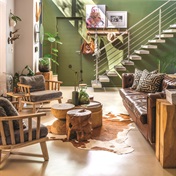Photographs Sally Chance
Trish Guilhermino refrained from changing her garden until she’d done some careful planning. “The first year after we moved in, I spent hours – at different times of the day – in the garden observing the movement of the sun and the shadows during the different seasons and which plants were thriving or struggling.”
She did rough sketches, using the house plans and Google Earth to get an idea of the unusual shape of the property. And then she started clearing. “I removed the plants that were dotted all over the lawn, two long hedges in the middle of nowhere and about a dozen Tibouchinas. The plants that were removed were shredded and turned into compost and mulch,” she says. The next step was to create garden rooms leading from one to the other.




 Publications
Publications
 Partners
Partners











